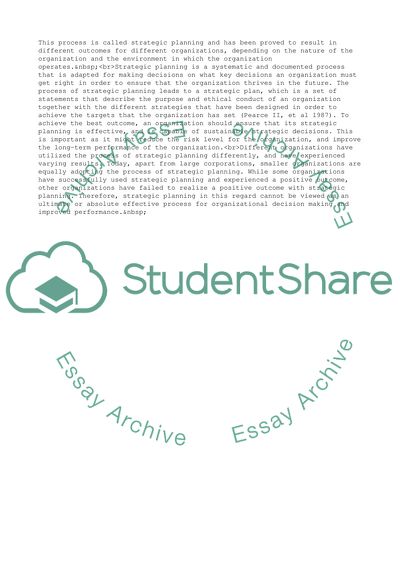Cite this document
(“Strategic Planning in Uncertain and Dynamic Environments Research Paper”, n.d.)
Strategic Planning in Uncertain and Dynamic Environments Research Paper. Retrieved from https://studentshare.org/business/1661357-your-initial-assessment-in-strategic-management-in-a-global-context-takes-the-form-of-an-essay-the-topic-of-the-essay-is-a-follows-critically-evaluate-the-argument-that-formal-strategic-planning-is-no-longer-an-appropriate-organisational-process-f
Strategic Planning in Uncertain and Dynamic Environments Research Paper. Retrieved from https://studentshare.org/business/1661357-your-initial-assessment-in-strategic-management-in-a-global-context-takes-the-form-of-an-essay-the-topic-of-the-essay-is-a-follows-critically-evaluate-the-argument-that-formal-strategic-planning-is-no-longer-an-appropriate-organisational-process-f
(Strategic Planning in Uncertain and Dynamic Environments Research Paper)
Strategic Planning in Uncertain and Dynamic Environments Research Paper. https://studentshare.org/business/1661357-your-initial-assessment-in-strategic-management-in-a-global-context-takes-the-form-of-an-essay-the-topic-of-the-essay-is-a-follows-critically-evaluate-the-argument-that-formal-strategic-planning-is-no-longer-an-appropriate-organisational-process-f.
Strategic Planning in Uncertain and Dynamic Environments Research Paper. https://studentshare.org/business/1661357-your-initial-assessment-in-strategic-management-in-a-global-context-takes-the-form-of-an-essay-the-topic-of-the-essay-is-a-follows-critically-evaluate-the-argument-that-formal-strategic-planning-is-no-longer-an-appropriate-organisational-process-f.
“Strategic Planning in Uncertain and Dynamic Environments Research Paper”, n.d. https://studentshare.org/business/1661357-your-initial-assessment-in-strategic-management-in-a-global-context-takes-the-form-of-an-essay-the-topic-of-the-essay-is-a-follows-critically-evaluate-the-argument-that-formal-strategic-planning-is-no-longer-an-appropriate-organisational-process-f.


